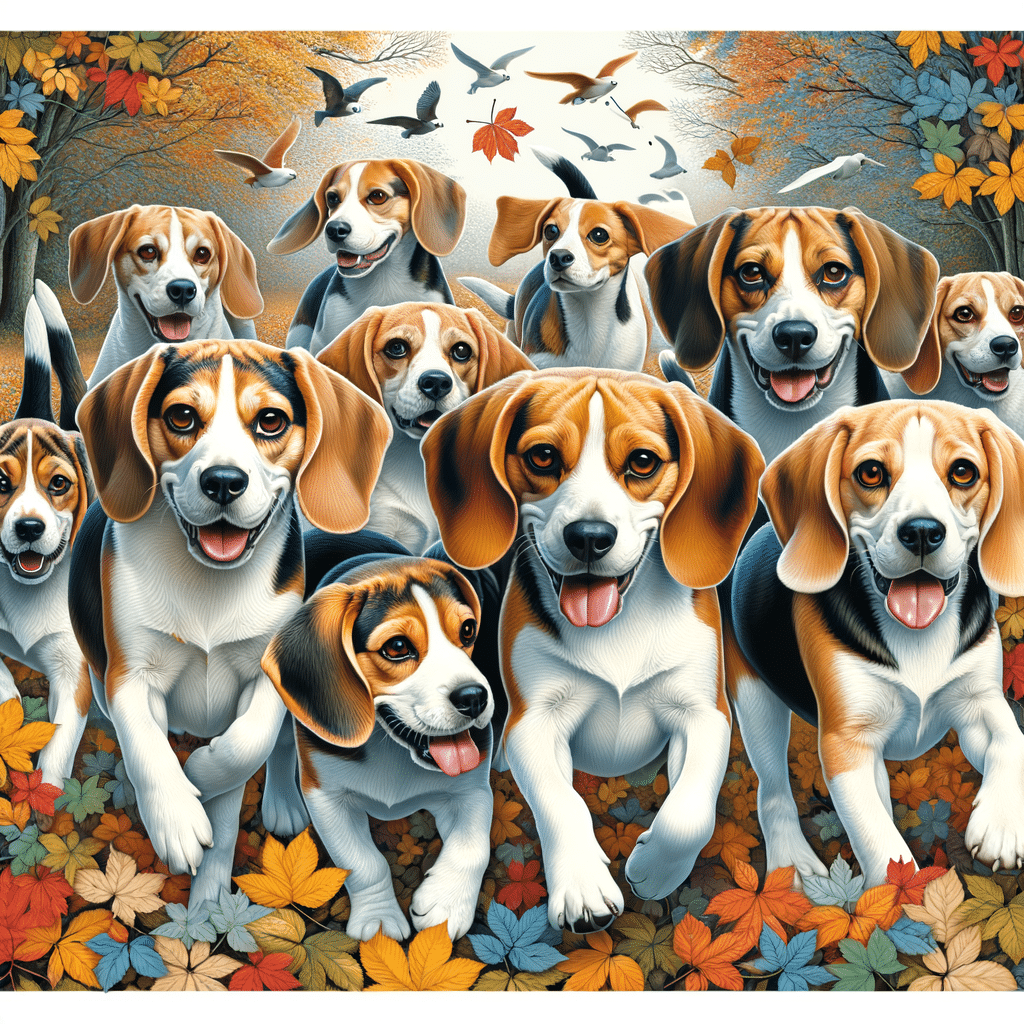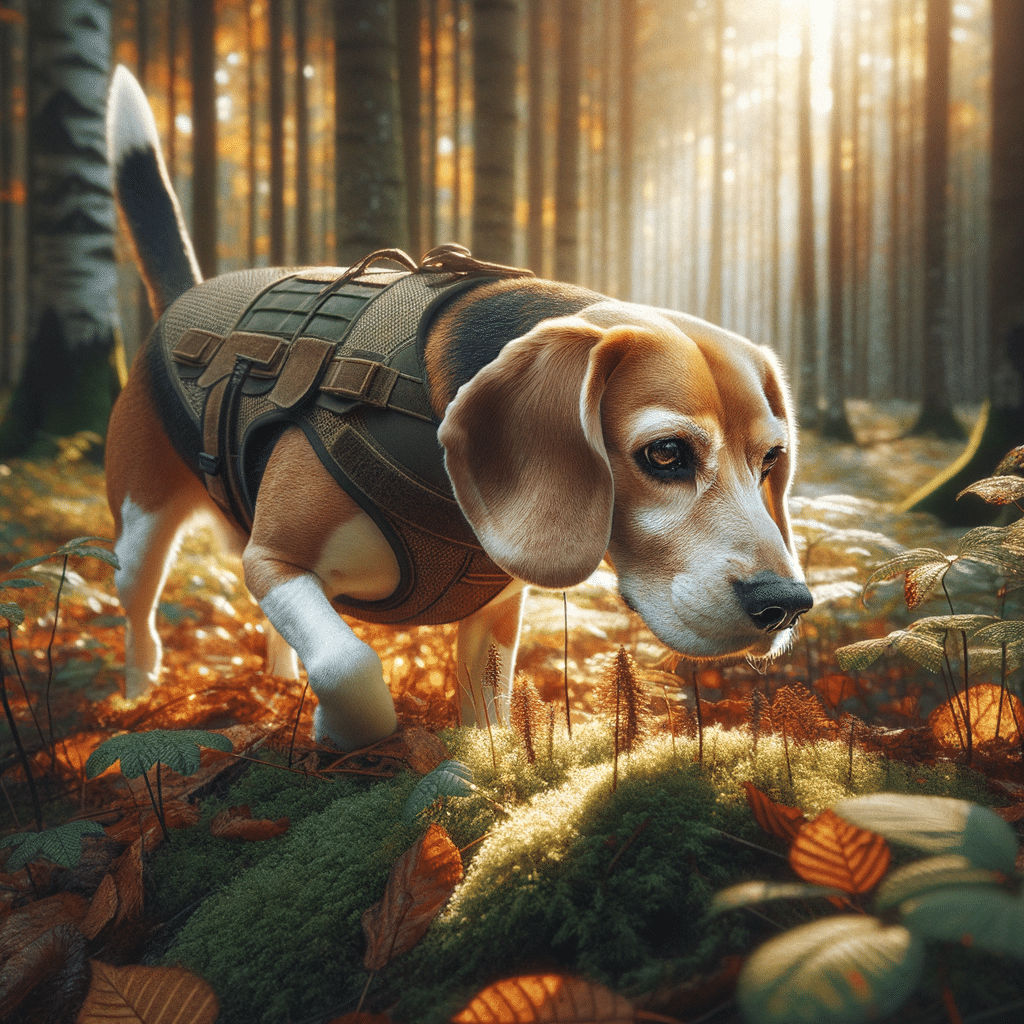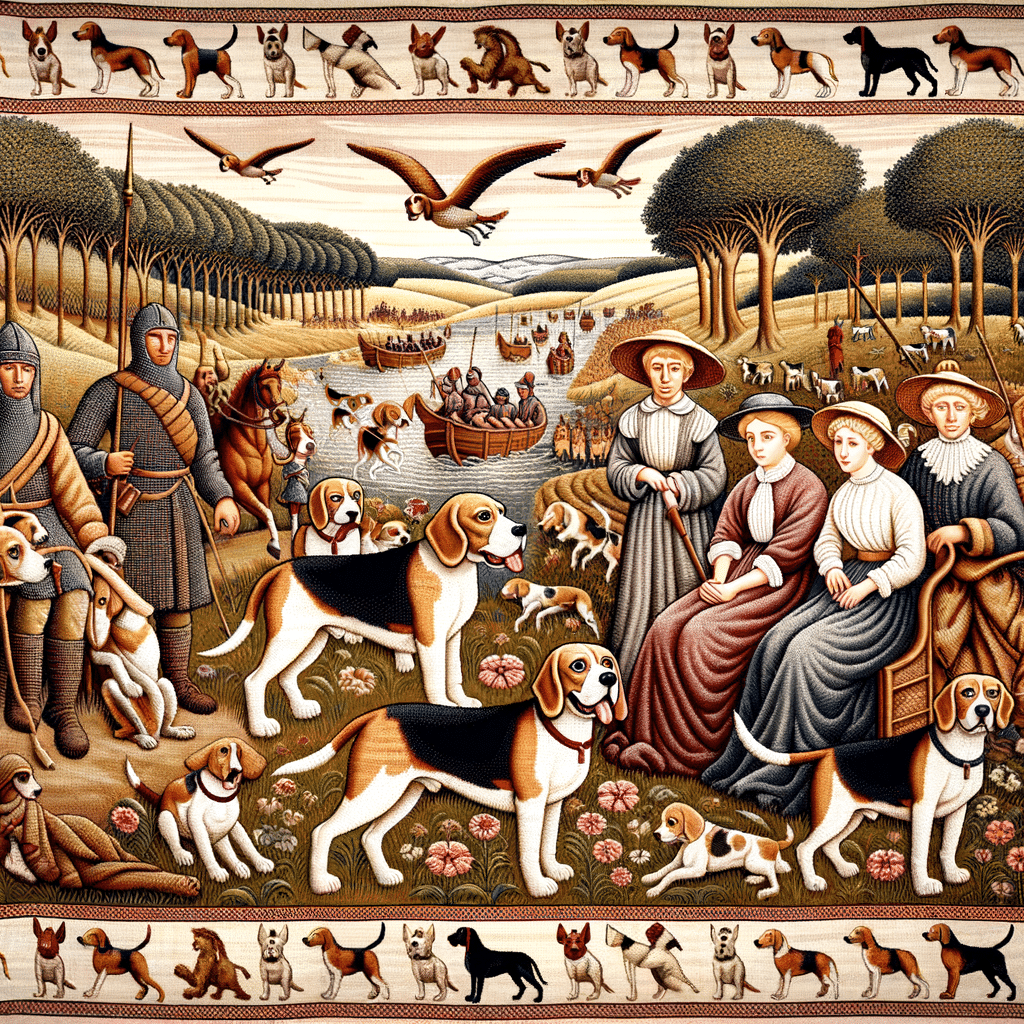When considering dog breeds that are great for families, hunting, or companionship, the beagle and harrier dogs often come to mind. When considering the beagle vs. harrier, identifying the right breed comes down to your specific needs for the dog.
In This Article
Each dog breed is known as an excellent hunting dog with keen senses, especially the sense of smell. Though they share many traits, there are notable differences when deciding which breed might be the right fit for a household or hunting companion.
The beagle is one of the most familiar and beloved hound breeds, known for its friendly nature and compact size. On the other hand, the harrier may be less known, but it is larger and more powerful, making it a robust choice for those needing a more substantial dog. Despite their similarities in appearance and lineage, each breed brings unique traits that cater to different preferences and lifestyles.
Highlights
- Beagles are smaller and lighter than harriers, which are larger and more muscular.
- Each breed has friendly behavior, but harriers may require more exercise because of size and energy levels.
- Prospective owners should consider each breed’s specific care needs and health profile before deciding.
Origins and History
The beagle and harrier are two distinct breeds with a rich history rooted in England. They share a common ancestry with the English foxhound. Both were bred for hunting, evolving over centuries to meet the specific needs of their times.
Beagle History
The beagle dog’s history dates back to the 11th century, with changes in size occurring over time. Originating in England, this breed was developed primarily for hunting hares due to its keen sense of smell and stamina. The beagle’s ancestry includes breeds like the harrier and other hound breed dogs, and it has been popular in both its homeland and America for its versatility and affectionate nature.
Harrier History
The harrier dog breed has an even older history, with early references by sportsmen such as the Greek writer Xenophon dating back around 450 B.C. The breed is believed to have been developed in England for hunting hares and foxes over larger territories. As a larger relative of the beagle and smaller cousin of the English foxhound, the harrier was valued for its endurance and capabilities in hunting packs.
Physical Characteristics
When distinguishing between beagles and harriers, their physical characteristics offer clear indicators. Size and coat color are the most pronounced differences in their identification.
Size and Appearance
Beagles typically present as a small to medium-sized breed with a height ranging from 13 to 15 inches if they are 13-inch beagles or over 13 up to 15 inches for the larger size variant at the shoulder. Adult beagles maintain a weight of about 20 to 30 pounds, with a body slightly longer than tall. Their face is expressive, with a broad head, large brown or hazel eyes, and long, hound-like ears set low on their head.
In contrast, harriers are larger, standing between 19 to 21 inches at the withers, and are generally more muscular and powerful. These dogs usually weigh in at around 45 to 65 pounds. The harrier’s body is well-balanced with a level back and a tail of medium length, which is carried high. Their head is in proportion to the body with a broad skull and features large, wide-set eyes and low-hanging ears.
Coat and Colors
Both breeds showcase a short, dense coat that is weather resistant, but due to the harrier’s larger size, they differ in their grooming needs.
Beagles are known for their tricolor coats of black, brown, and white, but they come in a variety of other colors and combinations, such as red and white or lemon and white. The breed’s coat is designed to protect it from brambles during hunting.
Harriers, while displaying a similar range of coat colors, including the classic tricolor, are likelier to possess various colors. They can be found in red and white, lemon and white, and sometimes blue and white combinations.
Temperament and Behavior
When comparing the temperament and behavior of the beagle and harrier, potential owners should consider their energetic personality, social tendencies, and the commitment required for their exercise and training needs.
Personality
Beagles are known for their joyful and adventurous spirits, often displaying determined behavior in various activities. Their origins as hunting dogs contribute to their active personalities, consistently playful, and eagerness to explore. On the other hand, harriers possess an equally energetic and friendly nature but tend to have a more even-tempered disposition, which can adapt smoothly to varying activity levels.
Social Behavior
Both breeds have strong social inclinations and are family-friendly, making for excellent companions. They are affectionate with family and typically good with children, earning them a reputation as desirable family pets. Beagles thrive in social settings, though they may be prone to separation anxiety if left alone frequently, highlighting their need for companionship. Harriers are also amiable, and while they cherish human interaction, they can be more independent.
Exercise and Training
Beagle: Daily exercise, engaging playtime, intelligent but can be stubborn, benefits from consistent training.
Harrier: At least 50 minutes per day. Intelligent, tends to be more obedient, and is often easier to train.
To maintain a healthy dog, both breeds demand significant daily exercise to maintain their active lifestyles. They are not suited for sedentary living and are happiest when they have a job or space to roam and play.
Regular playtime and mental stimulation are essential for these energetic dogs to prevent boredom and destructive behavior. Training for both can be successful when employing positive reinforcement techniques, as they are intelligent and capable of learning various commands and behaviors.
Health and Care
Awareness of breed-specific health concerns and routine maintenance requirements is crucial for their well-being when considering the health and upkeep of beagles and harriers.
Common Health Issues
Beagles and harriers share a predisposition to certain health issues, such as hip dysplasia, a condition affecting the hip socket that can lead to arthritis or discomfort. They may also experience epilepsy, which is manageable with proper veterinary care. Obesity is a common concern; therefore, monitoring their diet and ensuring regular exercise is paramount.
Both breeds can be prone to ear infections due to their large, floppy ears trapping moisture and bacteria. Hypothyroidism, a hormonal disorder, can also occur, impacting their metabolism. Regular vet check-ups are essential to catch these issues early.
- Hip dysplasia: Managed with diet, exercise, and vet care.
- Epilepsy: Requires medication and monitoring.
- Obesity: Prevented through diet control and regular exercise.
- Ear infections: Routine ear cleaning helps prevent infections.
- Hypothyroidism: Treated with hormone therapy.
Maintenance and Grooming
Maintenance and grooming are integral to a healthy regime for both beagle and harrier breeds.
Beagles typically have a short coat that sheds moderately, so regular brushing will help manage loose hair and distribute skin oils. Harriers also require brushing but may shed less than their beagle counterparts. Both breeds need their teeth brushed regularly to prevent dental issues.
- Shedding: Weekly brushing helps reduce loose fur.
- Teeth: Brush several times a week to maintain dental health.
Both breeds require relatively high exercise needs as they were bred for stamina in the field. Daily walks, interactive play, and mental stimulation are necessary to keep them fit and prevent health issues like obesity. Lastly, they both enjoy an average lifespan of 10-15 years, with proper care contributing to a full and healthy life.
Frequently Asked Questions
In comparing beagles and harriers, prospective pet owners often have specific queries regarding their traits and suitability as pets. This section addresses common questions about the differences in temperament, size, and other distinguishing factors between the two breeds.
What are the main differences in temperament between beagles and harriers?
Harriers are known for being more even-tempered and outgoing, while beagles are typically more curious and may possess a more independent streak. Both breeds are sociable and enjoy companionship, but harriers might be better suited to new dog owners due to their easygoing nature.
How do harriers and beagles differ in size and stature?
Harriers are larger than beagles, generally weighing 45 to 65 pounds and standing up to 21 inches at the withers. Beagles are smaller, typically weighing 22 to 24 pounds and standing between 13 to 15 inches at the withers for the smaller variety and up to 15 to 17 inches for the larger ones.
What should one expect when considering a beagle-harrier crossbreed?
Potential owners should expect a crossbreed between the parents’ sizes. It may show traits from both. This includes a dog that is likely highly energetic, has a strong instinct for scent tracking, and may be highly sociable and friendly.
Can you distinguish between a harrier, beagle, and foxhound regarding their physical and behavioral traits?
Harriers are larger than beagles but smaller than English foxhounds and have a robust build. Beagles are the smallest, with fine features. Foxhounds are the largest, with a more commanding presence. Behavior-wise, beagles are often more independent, harriers are compliant and good-natured, and foxhounds are known for their stamina and loyalty.
How does the rarity of harriers compare to beagles, and what factors contribute to it?
Harriers are relatively rare compared to beagles, particularly in the United States. This scarcity occurs because of their later introduction and the fact that they are historically bred for hunting in packs, making them less common as family pets.
What considerations should one be aware of before purchasing or adopting a harrier dog?
When considering a harrier, one should be aware of their need for regular exercise and mental stimulation, as they are active dogs. Prospective owners should also consider the space and time commitment required for a larger dog and be ready to engage in consistent training and socialization.






